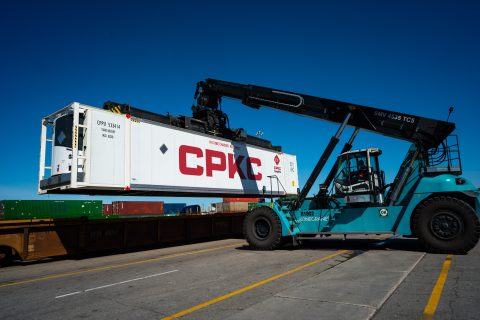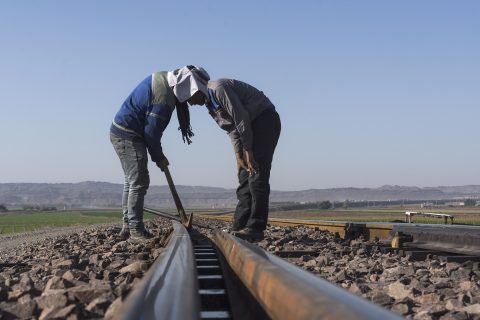Adif secures one third of funds for rolling highway, but it needs more

The Spanish government has allocated 32 million euros in the General State Budget for 2023 for the construction of the Algeciras-Zaragoza Rolling Highway. Adif, the Spanish infrastructure manager, is in charge of the project. This new railway line will therefore connect the south of Spain to the north, and its total cost exceeds 100 million euros, as Adif told RailFreight.com. However, it is not clear how Adif plans on financing the rest of the project or its schedule.
Once completed, transit time from the port of Algeciras to the Zaragoza-Plaza terminal will revolve around 21 hours. Additional financing of about 6,5 million euros was requested from the EU’s Connecting Europe Facility (CEF) for profile adaptations. The line will be 1,074 kilometres long and equipped with an Iberian gauge. As the IM added, both the port of Algeciras and the terminal in Zaragoza “are ready to start providing these services without the need to make any investment in the first phase.
For this project, Adif is collaborating with the Port Authority of the Bay of Algeciras, Aragón Plataforma Logística, and Rail&Truck Strait Union. “Currently, the works for the adaptation of the profiles in bridges and tunnels of this corridor are in the drafting phase of construction projects,” the company highlighted.

Boost Ro-Ro cargo and connecting to two TEN-T corridors
“Most of the cargo in this corridor is brought together by the fruit and vegetable, automotive and textile sectors,” highlighted Adif. This rolling highway is expected to boost the TEN-T Mediterranean and Atlantic corridors as well as intermodal services between Europe and Morocco. Another sector that is likely to benefit from the rolling highway will be Ro-Ro cargo.
“The port of the Bay of Algeciras is the fourth Spanish port in Ro-Ro traffic, but it is the one that has registered the most growth between 2019 and 2020 despite the impact of coronavirus pandemic,” Adif pointed out. The company said that they are forecasting a 75 per cent growth in the Ro-Ro sector between 2020 and 2025. The new railway line will therefore aspire to help the direct transfer of such cargo from ships to trains.
History of the Algeciras-Zaragoza Rolling Highway
The project for the rolling highway started at the end of March, when Adif invested 2,2 million euros for a study that mostly focused on railway overpasses. More specifically, 361 overpasses along the Algeciras-Zaragoza line were examined to assess which ones need reconstruction.
Zaragoza and Algeciras both play strategic roles in the Spanish infrastructure. Zaragoza is a key element in connecting Barcelona and Valencia to the Spanish northern hinterland and is also located close to the border with France. The port of Algeciras, on the other hand, receives containers from China and Southeast Asia. Moreover, it offers a short-sea link to Morocco, which is expected to benefit from the rolling highway.
Also read:
- Spain and Poland are now closer thanks to CFL and KLOG
- Ukrainian grain reaches Spain by rail, but route is harsh and rocky
- Maersk puts fresh produce trains on tracks between Valencia and the UK
You just read one of our premium articles free of charge
Want full access? Take advantage of our exclusive offer





